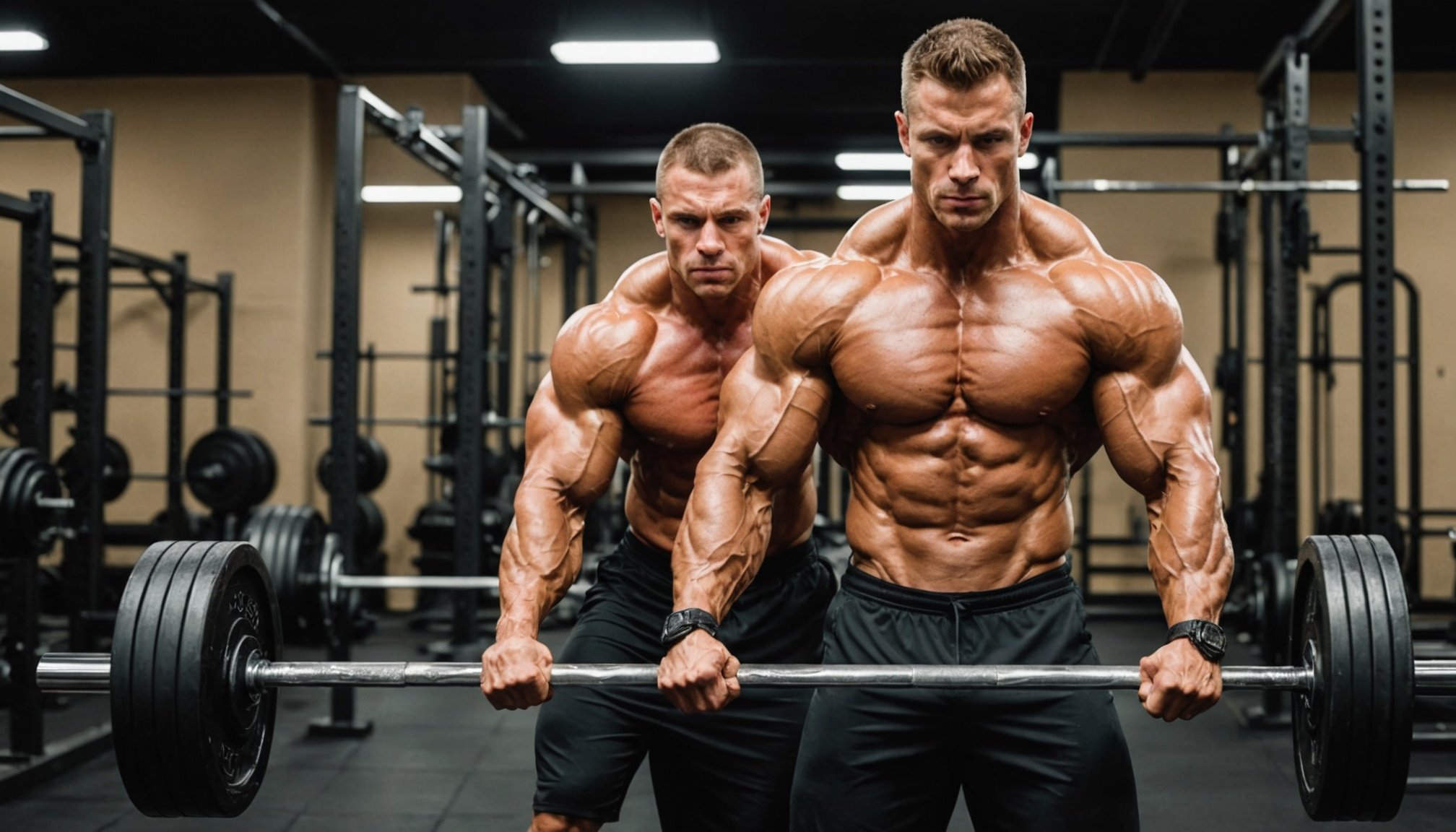Muscle building and flexibility often seem to be in opposition when it comes to bodybuilding. However, a holistic approach that incorporates both strength training and flexibility exercises can help you achieve your bodybuilding goals. The secret lies in understanding how these aspects of physical fitness work together to promote overall health while improving physique and strength. This article will explore strategies you can implement to find this balance, shedding light on the importance of stretching, the role of diet, and the value of yoga in a comprehensive bodybuilding routine.
Incorporating Stretching into Your Strength Training Routine
In the realm of bodybuilding, there’s an intense focus on strength training. The practice involves heavy weight lifting to stimulate muscle growth and increase strength. However, the pursuit of larger muscles shouldn’t deter you from stretching. Incorporating stretching exercises into your strength training routine promotes flexibility and can significantly complement your muscle-building efforts.
Also to see : What are the signs of overtraining in muscle building workouts?
When you engage in strength training, your muscles contract and can become tight over time. This tension can limit your range of motion, which may affect your performance during workouts. Stretching is the antidote to this tension. It elongates the muscles, increasing your flexibility and allowing you to perform better in your training sessions.
But what’s the best time to stretch? Should you do it before or after your workout? Stretching both before and after exercises has its benefits. Pre-workout stretches prepare your muscles for the impending exercise, improving your performance. Post-workout stretches, on the other hand, can help alleviate muscle tension and soreness, promoting quicker recovery.
Have you seen this : How does the time of day affect your performance in the gym?
Remember, consistency is crucial. Make stretching a regular part of your workout routine, just like your strength training exercises.
The Role of Diet in Muscle Building and Flexibility
Diet and nutrition play an indispensable role in bodybuilding. They provide the energy required for workouts and the nutrients needed for muscle recovery and growth. However, your diet can also impact your flexibility. Let’s delve into how your dietary habits can influence both muscle building and flexibility.
Protein is a vital component of a bodybuilder’s diet. It promotes muscle recovery and growth, particularly after a rigorous training session. Consuming sufficient protein in your diet helps ensure your muscles repair and grow effectively. However, don’t neglect other essential nutrients. Carbohydrates provide energy for your workouts, and fats are crucial for hormone regulation, among other functions.
Hydration can also impact your flexibility. Staying well-hydrated ensures your muscles and connective tissues remain supple, aiding your stretching efforts. So, don’t forget to drink plenty of water before, during, and after your workouts.
Utilizing Yoga for Enhanced Flexibility and Muscle Strength
Yoga, often associated with mindfulness and relaxation, can also be a powerful tool in your bodybuilding arsenal. Far from being just a form of stretching, yoga is a full-body workout that can improve both your flexibility and muscle strength.
Yoga poses require you to hold your body in specific alignments, often for extended periods. This practice not only stretches your muscles but also strengthens them. The static nature of the poses enhances muscle endurance, while the balance required for many poses boosts core strength.
Moreover, yoga can be a fantastic way to cool down after a rigorous bodybuilding session. A gentle yoga routine can help stretch out your worked muscles, aiding recovery and reducing post-workout soreness.
Incorporating Resistance Training for Muscle Building and Flexibility
Resistance training is a staple of any bodybuilding routine. It challenges your muscles by compelling them to work against a weight or force, fostering muscle growth. Resistance training comes in many forms, from lifting weights to using resistance bands or even your body weight.
When it comes to balancing muscle building and flexibility, resistance training can be a valuable asset. As you perform resistance exercises, your muscles stretch and contract. The lengthening that occurs during the stretching phase promotes flexibility.
Resistance training can also help improve your muscle strength and endurance, critical aspects of bodybuilding. By incorporating resistance exercises into your routine, you can build stronger, more flexible muscles.
In summary, balancing muscle building and flexibility involves more than just lifting weights. It requires a holistic approach that includes stretching, a balanced diet, yoga, and resistance training. So, as you pursue your bodybuilding goals, don’t neglect flexibility. Your body and performance will thank you.
The Significance of Addressing Muscle Imbalances in Bodybuilding
When it comes to bodybuilding, ensuring symmetry and balance in your muscle groups is of utmost importance. Muscle imbalances occur when one set of muscles (for example, your biceps) becomes more developed than the opposing set (in this case, your triceps). Such imbalances can lead to issues with posture, movement, and could potentially lead to injuries.
Addressing muscle imbalances is crucial for both muscle building and flexibility. Balanced muscles allow for a full range of motion, which aids in performing exercises correctly and efficiently. It also means that each muscle group can be worked to its full potential, aiding overall muscle growth.
Regular strength training routines should incorporate exercises that target all muscle groups. This approach not only promotes muscle mass but also helps avoid muscle imbalances. It’s also beneficial to alternate between different types of exercises and not focus solely on one area. The Mayo Clinic suggests that you should aim to strength train all major muscle groups at least twice a week for optimal results.
In addition, static stretching can be beneficial in addressing muscle imbalances. By holding a stretch for a lengthy period, you can increase the flexibility of a tighter, overactive muscle, helping to restore balance.
Remember, addressing muscle imbalances isn’t just about aesthetic symmetry but also about maintaining an efficient, functional, and healthy body.
Protein Intake, Pre Workout and Post Workout for Optimal Muscle Building and Flexibility
Your pre and post workout routines play a significant role in both muscle building and flexibility. These times are not only crucial for fuelling your body and allowing it to recover, but they also represent opportunities to enhance your flexibility training.
Before your workout, consider a pre workout routine that includes both light static stretching and mobility exercises. This prepares your muscles for the upcoming strength training or resistance exercise, allowing for a better range of motion during the workout.
As for your protein intake, it is well-documented that protein-rich foods or supplements consumed post-workout can significantly aid in muscle recovery and growth. The Mayo Clinic recommends that you consume protein within a two-hour window after weight training to maximize muscle repair and build muscle.
Incorporating a short stretching routine as part of your post-workout recovery can also be beneficial. At this time, your muscles are warm and more receptive to stretching, allowing for an increase in flexibility.
Remember, achieving a balance between muscle building and flexibility is not a one-time task but a consistent effort that involves all aspects of your workout routine.
Conclusion: The Synergy of Strength and Flexibility
To summarize, successfully balanced bodybuilding requires a comprehensive approach that accents both muscle building and flexibility. Incorporating elements such as yoga poses, resistance training, and static stretching into your routine helps maintain a healthy range of motion, prevents muscle imbalances and promotes muscle mass. Simultaneously, mindful practices like maintaining a balanced protein intake and staying well-hydrated are essential for muscle growth and recovery.
Achieving this balance is not merely about alternating between weight training and flexibility exercises. Instead, it’s about understanding how these elements can work in synergy. For instance, yoga bodybuilding not only enhances flexibility but also boosts muscle strength and endurance. Likewise, resistance exercise promotes muscle growth while also increasing flexibility.
In the quest for muscle mass and strength, flexibility should not be overlooked. It’s a vital aspect of fitness that aids performance, reduces the risk of injury, and contributes to overall body health. Balancing muscle building and flexibility might be challenging, but the rewards it reaps are well worth the effort. As always, consistency is key – make sure each aspect of your workout routine is given due attention, and your body will thank you. Accessed on March 20, 2024.






